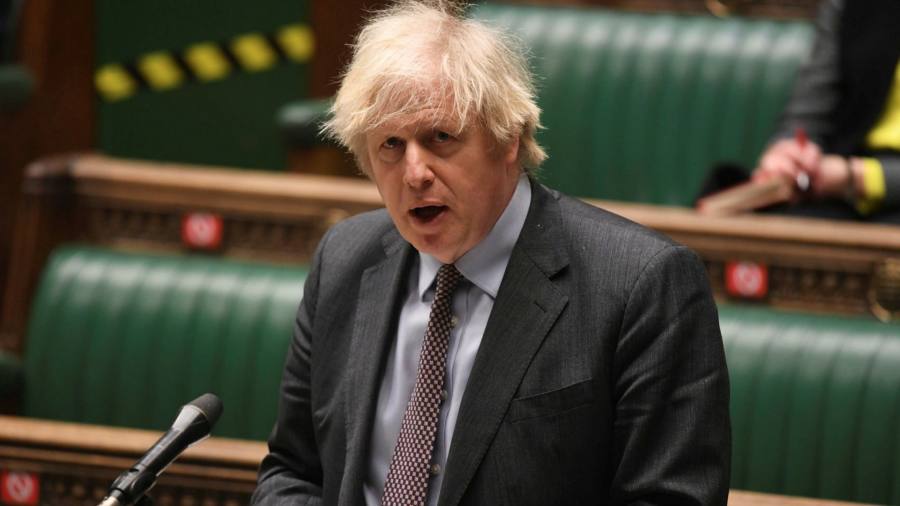[ad_1]
How quickly to emerge from what is hopefully Britain’s final coronavirus lockdown will be a defining decision of Boris Johnson’s premiership. The prime minister was too slow to take the country into its first shutdown last year, and too quick to bring it out — a key factor in a death rate that is one of the world’s worst. Exit too fast this time and another resurgence may entail yet another lockdown; too slow, and the toll on the economy and non-Covid health will be all the greater. The prime minister has been under pressure from some backbenchers to lift all restrictions by the end of April.
Johnson is right to resist the calls for excessive speed. The four-step reopening he unveiled on Monday, leading to a final exit from lockdown no earlier than late June, strikes a sensible balance. At least some key lessons of last year’s premature easing have been absorbed. The “road map†correctly prioritises data over dates, with at least five weeks between each step — allowing time for data to reflect the impact of the previous one, and a notice period for the public and businesses.
Also well-founded is the decision to put children first by beginning the reopening with schools on March 8. Indoor hospitality is left for step three, more than two months later. Teaching unions question the decision to return all year groups at once, unlike in Wales and Scotland. But the inoculation programme, and encouraging falls in cases and hospitalisations, combined with plans to use mass testing in schools, support that approach.
The government has outlined four tests, including progress with vaccinations, reductions in hospital numbers and deaths, infection rates, and the risk of new variants, that will guide its decision-making. How it chooses to weight those tests will play a role in how quickly the country moves between steps. As vaccinations start to reduce hospitalisation rates, it makes sense to shift the focus over time away from cases and on to hospital numbers. This is not just about minimising deaths but giving exhausted NHS staff a reprieve, and then the chance to begin clearing the mammoth healthcare backlog.
Initial data from England and Scotland on Monday suggesting vaccinations have reduced hospitalisations by around four-fifths in the elderly are highly encouraging. They suggest the country might, in principle, be able to live with a higher level of infections than before. Yet case numbers cannot be ignored; the more virus is still in circulation, the greater the danger of vaccine-resistant mutations.
It also makes sense to reduce infection rates to a level at which track and trace can take the strain of controlling the spread; there must be no repeat of the failure of last autumn. Test and trace statistics are today much improved. But it is crucial to the success of the exit strategy that the system operates effectively. The UK has delivered a successful vaccination programme, even if this drew on existing NHS knowhow and networks. There is no reason why it should not do the same with test and trace, into which billions of pounds have been poured.
Managing the exit successfully remains a daunting task. Effective border controls are needed to act against dangerous mutations arriving from abroad. Next week’s Budget must outline continued business support measures that are consistent with the road map and do not encourage consumer behaviour — as happened last summer — that might undermine it. The backdrop today, with millions of the most vulnerable now vaccinated, is more positive. But the country has lived through one false dawn. It cannot afford another.
[ad_2]
Source link





